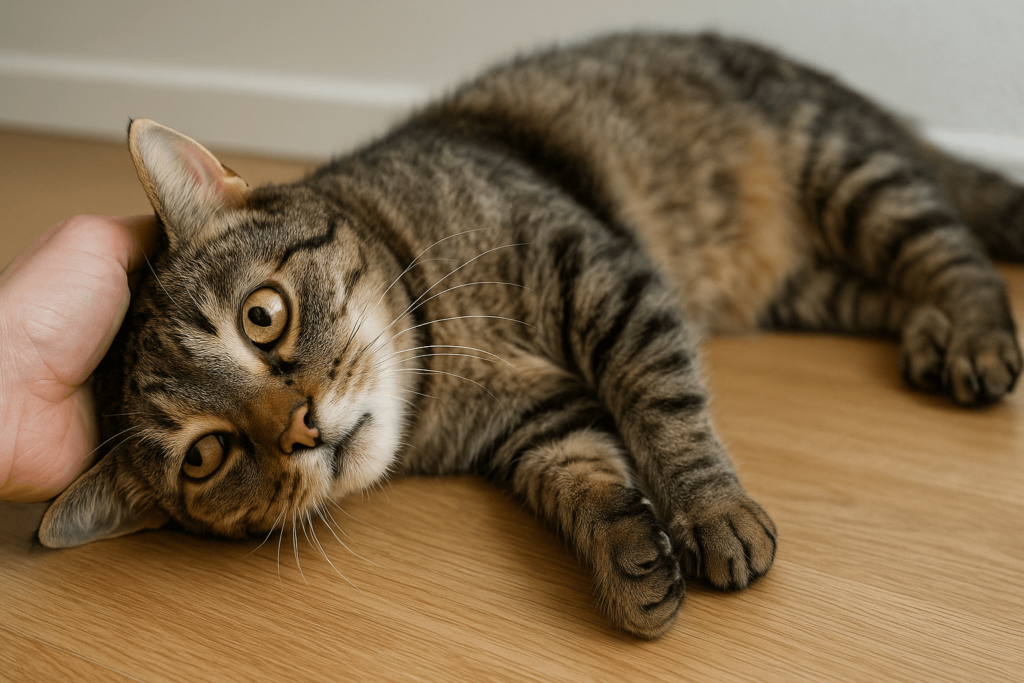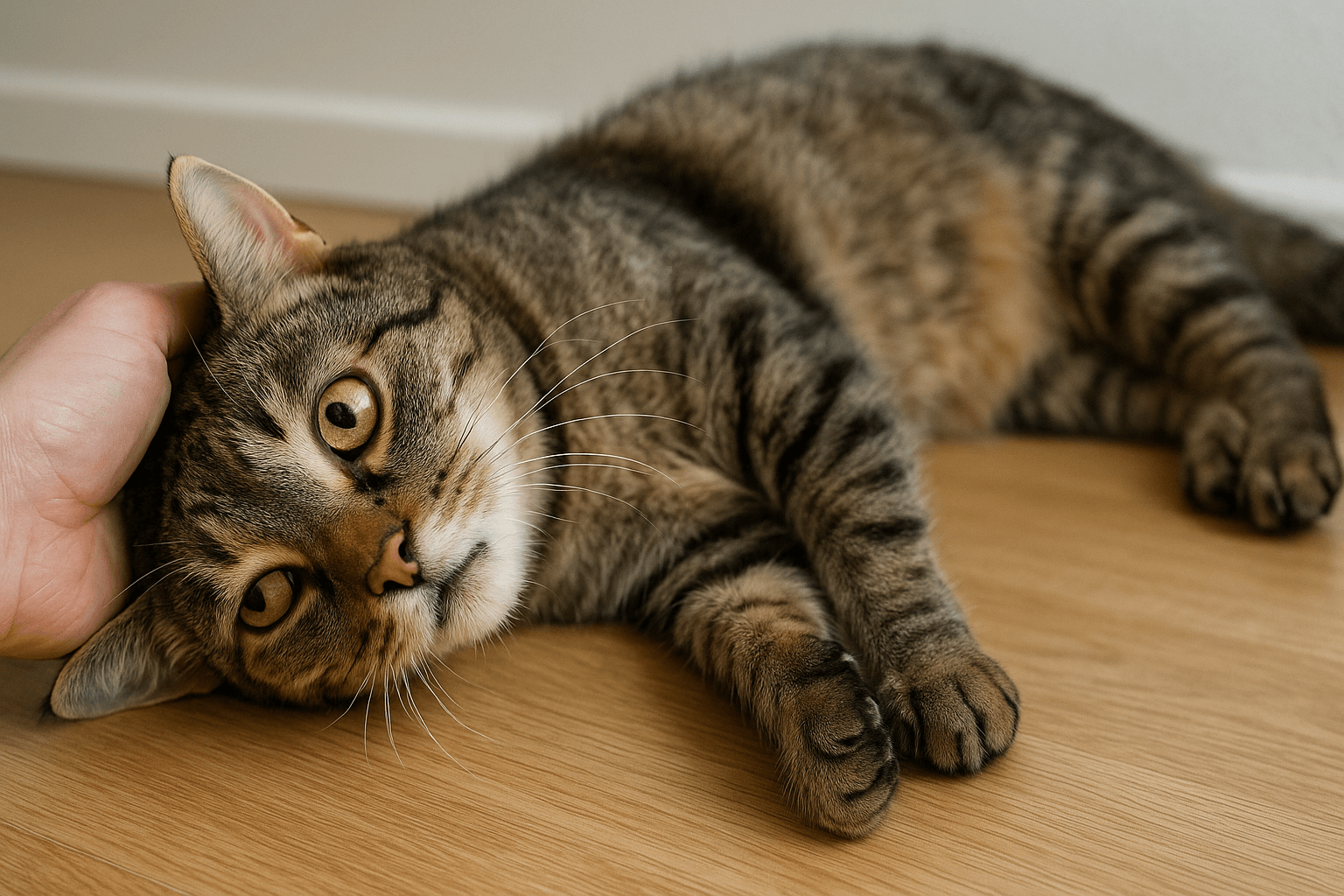Vestibular Disease in Cats: Understanding the Sudden Dizziness That Terrifies Pet Parents
One moment, your cat is lounging peacefully. The next, they’re stumbling, tilting their head, circling like a drunk dancer, and unable to stand. It’s terrifying. Your heart races. Is this a stroke? A tumor? A seizure? In many cases, it’s something far more common—and far more treatable—than you fear: vestibular disease. Though it looks alarming, feline vestibular disease is often a sudden, temporary disruption of balance that resolves on its own. This guide demystifies the condition, explains its causes, reveals what to do (and not do), and helps you support your cat through recovery with confidence.
Why Vestibular Disease Is More Common Than You Think
Vestibular disease in cats isn’t rare—it’s frequently misdiagnosed because its symptoms mimic serious neurological conditions. But understanding its true nature changes everything.
It’s a Balance Disorder, Not a Brain Injury:
The vestibular system controls spatial orientation and movement—when it falters, your cat loses its sense of up, down, left, and right.It Can Strike Suddenly and Without Warning:
Many cats wake up one morning with severe disorientation, as if their world has tilted sideways.It’s Often Idiopathic:
In over 60% of cases, no underlying cause is found—this is called “idiopathic vestibular disease,” and it’s surprisingly common in older cats.It’s Not Painful, But It’s Extremely Stressful:
Your cat isn’t in physical pain—but the constant sensation of spinning and falling causes intense anxiety.It Resolves on Its Own in Most Cases:
Unlike strokes or tumors, idiopathic vestibular disease typically improves within days and fully resolves in 2–3 weeks.
Recognizing this isn’t a death sentence—it’s a temporary neurological hiccup—can ease your panic and help you respond with calm, effective care.

The Key Symptoms That Signal Vestibular Disease
If your cat suddenly seems “off,” these are the unmistakable signs that point to vestibular dysfunction—not just laziness or a bad day.
Head Tilt:
A persistent, often dramatic tilt of the head to one side is the most classic sign—like your cat is listening to a whisper only they can hear.Circling or Falling to One Side:
Your cat may walk in tight circles, lean heavily against walls, or collapse onto their side, unable to right themselves.Nystagmus (Rapid Eye Movements):
Their eyes may dart back and forth involuntarily, even when they’re still—this is a telltale neurological clue.Loss of Coordination (Ataxia):
They stumble, wobble, or appear drunk. Walking in a straight line becomes impossible.Nausea and Vomiting:
The dizziness triggers motion sickness. Your cat may drool, refuse food, or vomit despite not eating.
These symptoms can be so severe that owners rush to the vet fearing a stroke. But while the signs look dramatic, the prognosis is often excellent.
Check this guide 👉Deadly Cat Diseases and Symptoms: Best 7 Expert Tips!
Check this guide 👉Cat Heart Disease Symptoms: Best 7 Expert Tips!
Check this guide 👉Cat Liver Disease Symptoms: Best 7 Expert Tips!
| Idiopathic Vestibular Disease | Other Causes of Similar Symptoms |
|---|---|
| Sudden onset, often in older cats over 10 years | Gradual progression over weeks or months |
| No neurological deficits beyond balance | Weakness, seizures, or altered consciousness |
| Improves dramatically within 72 hours | Worsens or plateaus without treatment |
| No fever, no ear discharge | Often accompanied by fever, pus, or pain |
| Full recovery expected in 2–3 weeks | Requires surgery, medication, or lifelong management |
Common Underlying Causes Beyond the Idiopathic Form
While many cases have no known cause, vestibular disease can also signal deeper health issues. It’s vital to rule these out.
Inner Ear Infections (Otitis Interna):
Bacterial or fungal infections in the deep ear can inflame the vestibular nerve, causing imbalance and head tilt.Brain Tumors or Inflammation:
Less common, but tumors in the brainstem or inflammation from encephalitis can mimic vestibular signs.Toxic Exposure:
Certain medications, household chemicals, or even some plants can damage the vestibular system.Hypothyroidism or Metabolic Disorders:
Rarely, hormonal imbalances can disrupt neurological function and lead to balance problems.Trauma or Head Injury:
Even a minor fall or bump can damage the delicate inner ear structures responsible for balance.
A vet will need to perform diagnostic tests to determine whether your cat’s case is idiopathic or secondary to another condition.
What to Do When Your Cat Has a Vestibular Episode
Seeing your cat dizzy and disoriented is heartbreaking—but your response in those first hours makes all the difference.
Stay Calm:
Your anxiety feeds theirs. Speak softly, move slowly, and avoid sudden movements or loud noises.Keep Them Safe:
Block stairs, remove sharp objects, and confine them to a quiet, padded room to prevent falls or injuries.Do Not Force Food or Water:
If they’re nauseous, forcing them to eat or drink can trigger vomiting. Offer small amounts gently.Support Their Movement:
Gently cup their body under the chest and hindquarters when they try to stand—they need physical stability.Contact Your Vet Immediately:
Even if you suspect idiopathic disease, professional evaluation is essential to rule out emergencies.
Your calm presence is their anchor. You’re not fixing the dizziness—you’re holding space while their body heals.
How Veterinarians Diagnose Vestibular Disease
A vet won’t just guess—they’ll investigate. Understanding the diagnostic process helps you know what to expect.
Physical and Neurological Exam:
The vet checks reflexes, eye movements, head posture, and coordination to assess vestibular function.Ear Examination:
An otoscope checks for infection, inflammation, or debris in the ear canal.Bloodwork and Urinalysis:
Screens for thyroid issues, kidney disease, or metabolic imbalances that could contribute.Imaging (X-rays, MRI, CT Scan):
Used if a tumor, stroke, or inner ear lesion is suspected—especially if symptoms don’t improve.Response to Treatment Trial:
If antibiotics or anti-nausea meds improve symptoms, it suggests an infectious or inflammatory cause.
Most idiopathic cases are diagnosed by exclusion—when everything else checks out, and the cat begins improving on its own.
How to Support Your Cat’s Recovery at Home
Recovery takes time—but your daily care makes it smoother, safer, and less stressful for your cat.
Create a “Recovery Zone”:
Use a small, quiet room with soft bedding, easy access to litter box, food, and water. No stairs or furniture to climb.Hand-Feed if Needed:
Place food and water near them. Some cats need to be gently guided to eat during the first few days.Use a Litter Box with Low Sides:
High walls are impossible to climb when dizzy. Use a shallow tray or even a cardboard box lined with litter.Gentle Massage and Stroking:
Light touch on the back and neck can soothe anxiety and stimulate circulation.Avoid Baths or Grooming:
Don’t bathe or brush them until they’re steady on their feet. Wet fur and handling increase stress.
Recovery isn’t about fixing—it’s about holding. Your patience is their medicine.
When to Worry: Red Flags That Mean It’s Not Idiopathic
Not all dizziness is harmless. Watch for these warning signs that suggest something more serious.
Symptoms Worsen After 3 Days:
Idiopathic cases improve quickly. If your cat gets worse, suspect a tumor or infection.Loss of Consciousness or Seizures:
These indicate brain involvement—not simple vestibular disease.Fever, Discharge from Ears, or Eye Changes:
Signs of active infection or systemic illness.Paralysis or Inability to Move Limbs:
Points to spinal or neurological damage beyond the vestibular system.No Improvement After 2 Weeks:
If there’s no progress, further diagnostics are essential.
Trust your instincts. If something feels off, push for more testing. Better safe than sorry.
FAQ: Vestibular Disease in Cats
Can vestibular disease be fatal?
Rarely. Idiopathic vestibular disease is not life-threatening. Secondary causes like tumors or infections require treatment but are often manageable.
Will my cat ever walk normally again?
Yes—most cats recover full mobility within 2–3 weeks. Some retain a slight head tilt permanently, but it doesn’t affect quality of life.
Is vestibular disease contagious to other pets?
No. It’s not infectious. Other cats and pets are completely safe.
Can stress cause vestibular disease?
Stress doesn’t cause it, but it can worsen symptoms. Keep your home calm during recovery.
Should I give my cat human motion sickness medicine?
Never. Human medications like Dramamine can be toxic to cats. Only use vet-prescribed anti-nausea drugs.
Embrace the Recovery—Your Cat Is Not Broken
Vestibular disease doesn’t define your cat. It’s not a sign of aging, weakness, or impending decline. It’s a sudden, startling glitch in their inner balance system—one that, more often than not, heals on its own with time, quiet, and your unwavering care.
You don’t need to fix it. You just need to be there.
Hold their head gently when they tremble.
Place their food within reach.
Speak in soft tones when they’re scared.
Let them rest. Let them recover.
Canned Pumpkin for Cat Diarrhea: Best 7 Expert Tips! Natural remedy to firm stools, soothe upset bellies, and support gut health safely.
Can a Cat Give You Scabies? Best 7 Expert Tips! Discover the truth about feline mites, human skin risks, and how to protect yourself—without panic.
Cat Flea vs Human Flea: Best 7 Expert Tips! Discover the truth about bites, species, and how to eliminate infestations for good.
Weird Cat Behaviors: Best 7 Expert Tips! Discover why cats do strange things—and how to understand, not punish, their instincts for a happier home.





